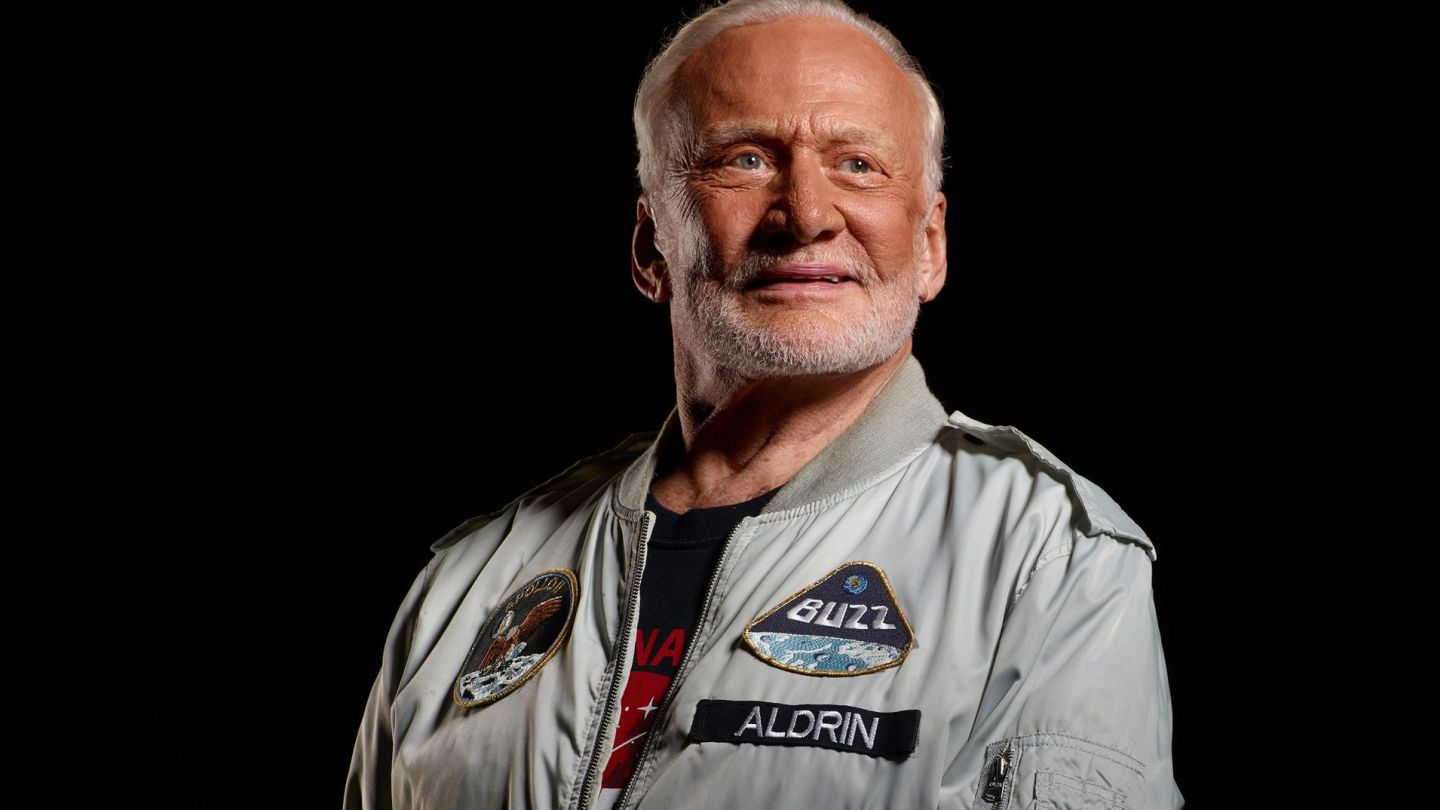

Words: Jonathan Wells
On July 21st 1969, at just after 3 o’clock in the afternoon, Buzz Aldrin set foot on the moon – becoming the second man in the history of the world to do so. His whole life, from childhood in New Jersey, through military service in the Korean War, to gaining his doctorate at the Massachusetts Institute of Technology, led to this moment – and has been defined by it ever since.
During the 60th anniversary celebrations of the Omega Speedmaster – the same watch Aldrin wore on his mission to the moon – the astronaut found time to sit down with Gentleman’s Journal and talk through his incredible life and career, using the pictures that tell the story.
BA: I’m still talking about things from 48 years ago! There have been a lot of things going on in between, but most of them have been preparing for adventure and exploration into the future. That’s my life. I’ve served my country ever since I swore an oath at the Montclair Academy when I was 17 years old. And I continue to serve now. I’m retired from the Air Force and I’m very proud to have been a part of the Apollo programme.
This was on my first mission in space, November 1966. We were taking pictures at night of the star systems. It’s an ultra-violet camera, time exposure 5 / 10 seconds. But between the night passes, we were travelling around and the sun was shining. So we were sight-seeing pretty much.
And I looked at the camera and I said, “Why don’t I just take a picture of myself”, and it turned out to be the first selfie in space in 1966. To set the real high standard, if you want a real selfie, the camera has to be attached to the spacecraft and then you take a picture. So it turned out to be the most expensive selfie stick you could ever imagine. The lighting isn’t all that good. But that wasn’t my fault! It’s the way the spacecraft was pointed, so that was Jim Lovell’s fault!
This picture is actually en route with the command module and the lunar module. We had to separate from the upper stage and turn around and dock with the lunar module. There was a period when I had to go through the tunnel as we were approaching the moon and that’s why I have this garment that we wore inside the command module and for my inspection of the lunar module.
While I was doing that, wearing the OMEGA watch of course, in full view, Neil put his head down through the tunnel, upside down, and took this picture of me in front of the triangular windows, which were the two windows on the lunar module. That is the instrument panel on the one side, and that was Neil’s window.
The boot print on this talcum-like surface was not like sand or plain old dust. It would fall away and it made a very distinct print. It fascinated me and I thought, “We’ve got to really take a good picture of this. But it ought to be a before and after.” So I picked out a nice smooth spot, took a picture before, put my foot down and this turned out to be quite a representative picture of the human print on the moon.
It looked a little lonely, so I decided to take another one, not quite as famous as this, and I put my boot down and moved it a little bit so you could see the boot and the print itself. The prints, of course, are fairly small, but each time you put your foot down as you’re walking, it sprays the dust to either side and it changes the colour of the surface.
We reported on what we had done during our time outside the capsule and then, a year or two ago, there were some photos taken by a lunar reconnaissance orbiter at fairly high altitude and you could see the white part of the descent stage that was left of the moon and a little bit of the experiments.
And there was a crater behind us, and if you look carefully you can see the darkened pathway of where, while I was getting back in the spacecraft, Neil went back to take pictures of this crater. You can see that he came back on a slightly different path and both of them are illuminated from space. Maybe 10 feet of a path that would show up as a darker colour.
It looks like it was posed but it was not at all. I was walking toward the lunar module, sometimes you can see a part of the probe that touched the ground first, and Neil said “hold it.” So I stopped and looked at him. And if you look closely you can see that the strap hanging down was not hanging down straight. It’s at an angle which means I was still turning.
Only a few people would notice that. But this is so characteristic, or iconic, because in the visor, you can see the reflection of the photographer, Neil in his white space suit, and the shadow, and the lunar module, and my shadow going out, and I think you can see the flag. So people look at this and think, “Wow, you can see the horizon and the black sky, it’s so iconic.” And people say, “Tell me about that photo.” And I say “I’ve got three words to describe that picture. Location, location, location.”
If you look at my right hand in this picture, you can see a black strap. And that’s the OMEGA watch that he wore on the surface of the moon. Also, a lot of people think this picture is of Neil. But it’s actually me – on the moon…
This year sees Omega celebrate the 60th anniversary of their Speedmaster. Read more here.


